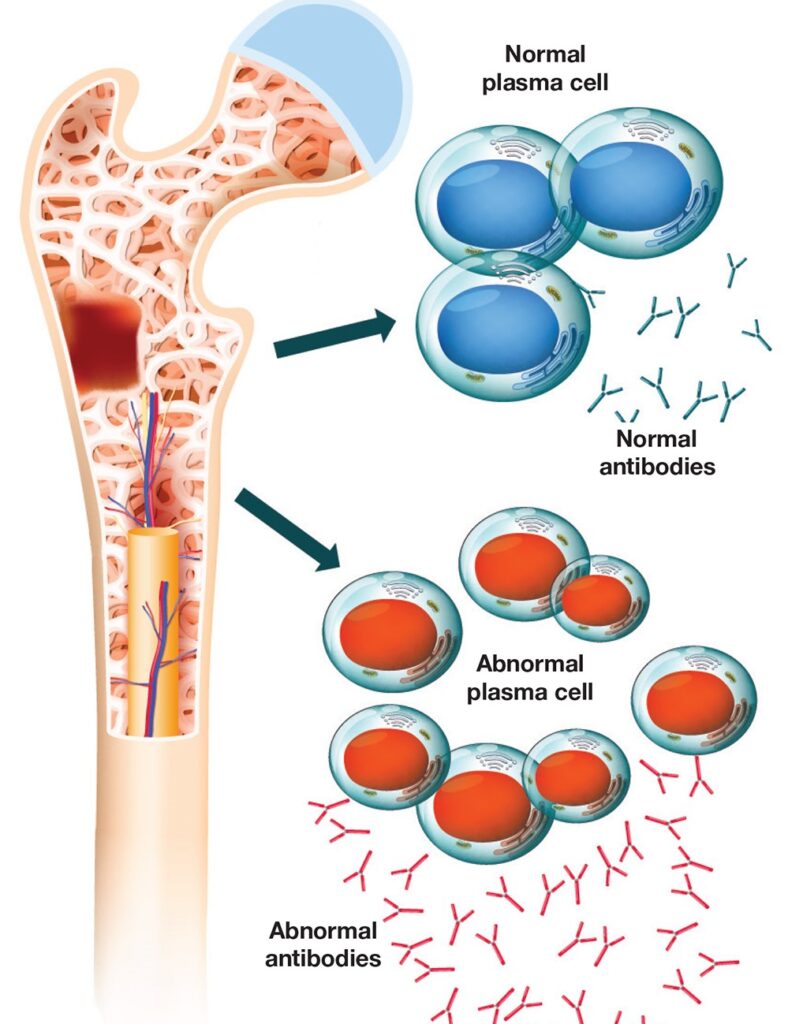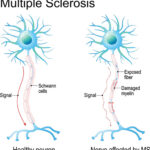Multiple myeloma is a type of blood cancer that affects plasma cells, a key component of the immune system found in the bone marrow. These malignant plasma cells multiply uncontrollably, producing abnormal antibodies and crowding out healthy blood cells, leading to various complications.

Causes and Risk Factors
While the exact cause of multiple myeloma remains unknown, several risk factors contribute to its development:
- Age: Most cases occur in individuals over 65.
- Genetic Factors: A family history of multiple myeloma increases risk.
- Ethnicity: African Americans have a higher incidence rate.
- Exposure to Toxins: Prolonged exposure to chemicals like benzene may contribute.
- Pre-existing Conditions: Monoclonal gammopathy of undetermined significance (MGUS) may progress to myeloma.
Symptoms of Multiple Myeloma
Symptoms vary by individual but commonly include:
- Bone pain, especially in the spine and ribs
- Fatigue due to anemia
- Frequent infections
- Kidney dysfunction
- Hypercalcemia (high calcium levels), leading to nausea and confusion
- Weight loss and general weakness
Diagnostic Methods
Early detection improves prognosis. Common diagnostic tests include:
- Blood and Urine Tests: Measure abnormal protein levels (M protein, beta-2 microglobulin)
- Bone Marrow Biopsy: Examines plasma cell percentage in the marrow
- Imaging Tests: X-rays, MRI, CT scans, and PET scans to detect bone damage
Treatment Options
1. Chemotherapy
Traditional drugs like melphalan and cyclophosphamide target rapidly dividing myeloma cells.
2. Stem Cell Transplantation
High-dose chemotherapy followed by a transplant of healthy stem cells helps restore normal blood cell production.
3. Immunotherapy
Drugs like daratumumab and elotuzumab boost the immune response against cancer cells.
4. Targeted Therapy
Proteasome inhibitors like bortezomib disrupt cancer cell protein recycling.
5. Radiation Therapy
Used for localized bone lesions causing pain or fractures.
Prognosis and Survival Rate
Multiple myeloma survival rates vary depending on factors such as stage at diagnosis, overall health, and treatment response. Recent advances in therapy have significantly improved life expectancy, with a median survival rate of 5-7 years in many cases.
Multiple myeloma is a complex yet manageable condition with early detection and advanced treatment. Ongoing research continues to improve patient outcomes, making new therapies more effective. If you or a loved one are at risk, consult a healthcare provider for regular screenings and early intervention.

